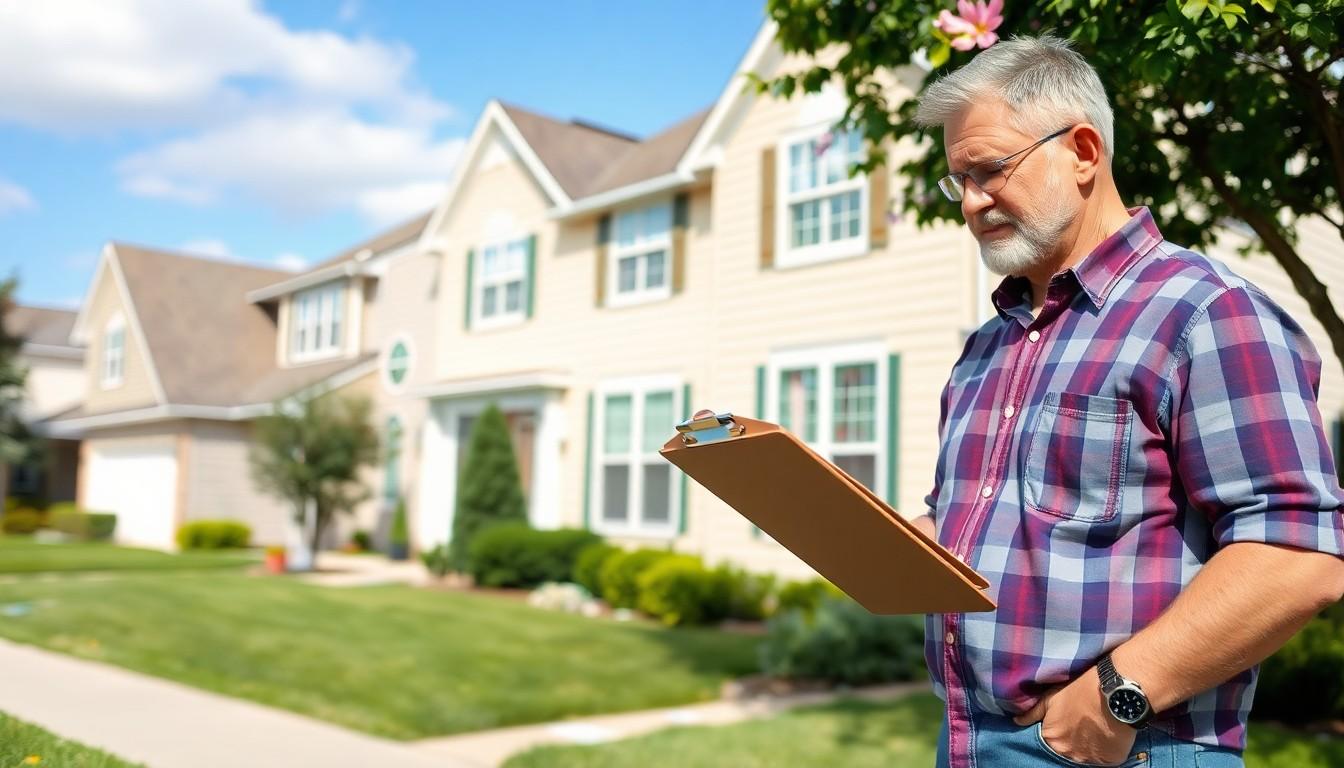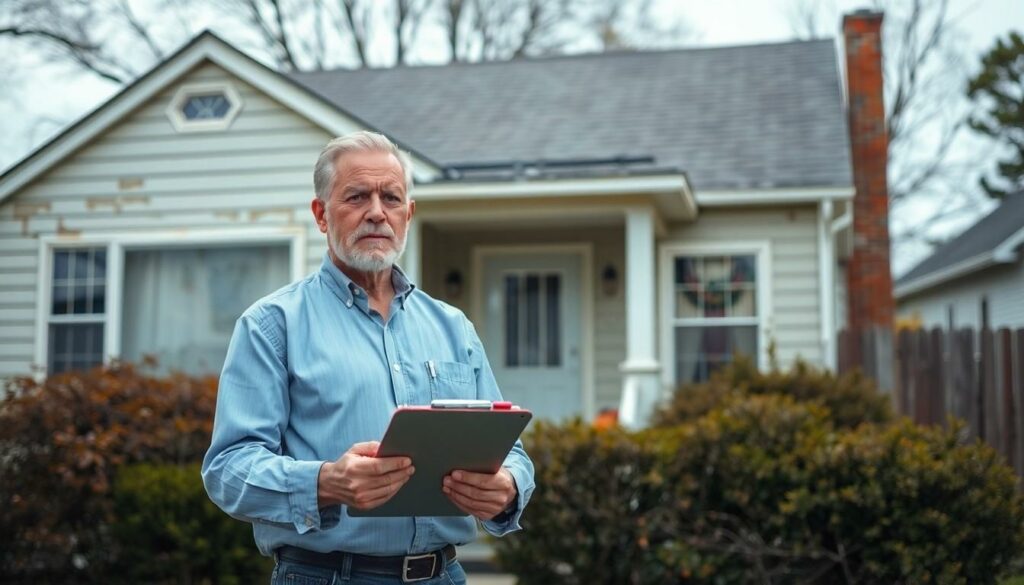When it comes to homeowners insurance, a failed inspection can feel like a slap in the face—like finding out your favorite pizza place has closed down. Suddenly, the cozy home sweet home turns into a ticking time bomb of potential costs and headaches. It’s not just about the roof over your head; it’s about peace of mind.
Imagine finally settling into your dream home, only to be greeted by a long list of issues that could send your insurance premiums skyrocketing. From leaky roofs to unruly squirrels in the attic, a failed inspection can turn your blissful abode into a comedy of errors. Understanding the ins and outs of this process can save homeowners from unexpected surprises, ensuring that their castle remains a fortress and not a financial disaster.
Table of Contents
ToggleUnderstanding Homeowners Insurance Inspections
Homeowners insurance inspections assess a property’s condition and risks. These evaluations help ensure that the coverage reflects the property’s true value and needs.
Purpose of Homeowners Insurance Inspections
Insurance inspections serve multiple critical functions. Assessing safety concerns remains a top priority. Identifying potential hazards like faulty wiring or plumbing prevents costly claims later. Ensuring the home meets safety codes protects both the homeowner and the insurer. Determining the property’s insurability is essential for confirming coverage eligibility. Adjustments to premiums often follow the inspection findings, aligning them with the home’s condition.
Common Reasons for Inspections
Inspections occur for various reasons, reinforcing the importance of regular evaluations. New policies often require a thorough inspection to assess risk levels. Significant renovations trigger reviews to ensure modifications align with safety standards. Claims, especially large ones, might prompt further inspections to verify conditions of the property. Lender requirements may also necessitate inspections during refinancing transactions to confirm continued insurability. Understanding these reasons helps homeowners prepare for potential challenges during the inspection process.
Consequences of a Failed Homeowners Insurance Inspection

A failed homeowners insurance inspection leads to immediate repercussions for the homeowner. Coverage may become limited or entirely revoked, leaving the property exposed to potential risks. Insurers often require remediation of identified issues before reinstating coverage. Failure to address these problems can jeopardize future claims and leave homeowners financially vulnerable.
Immediate Impact on Coverage
When a homeowners insurance inspection fails, the coverage often faces significant limitations. Insurers may place restrictions on the policy or suspend it altogether. Homeowners might find they cannot renew their policies or face non-renewal without required repairs. These constraints create a risk of being uninsured, which can lead to financial losses in case of damage. Addressing issues promptly becomes crucial to avoiding gaps in coverage and ensuring protection against unforeseen incidents.
Long-Term Effects on Premiums
Long-term impacts on premiums typically follow a failed inspection. Insurers adjust premium rates based on the property’s condition and identified risks. A higher risk profile from inspection findings can lead to increased premiums or even policy cancellations. Homeowners often experience substantial rate hikes as insurers compensate for potential losses. Ensuring that all issues are resolved serves to stabilize premium costs and improve insurability in the future.
How to Prepare for a Homeowners Insurance Inspection
Preparation for a homeowners insurance inspection is crucial for a favorable outcome. Homeowners can avoid complications by understanding what inspectors prioritize.
Key Areas to Focus On
Safety matters most during the inspection. Inspectors check for electrical hazards and potential fire risks. Structural integrity comes next, requiring evaluation of the roof, foundation, and walls. Plumbing systems also receive scrutiny; leaks or outdated fixtures can raise red flags. Lastly, a well-maintained exterior, including landscaping and fencing, impacts the overall safety assessment. Addressing these areas can help ensure a smoother inspection process.
Tips for Successful Compliance
Organizing relevant documents simplifies the inspection process. Homeowners should gather previous inspection reports, maintenance records, and warranties for major appliances. Cleaning the home enhances its appeal, highlighting areas that meet safety standards. Fixing visible issues, like broken fences or peeling paint, demonstrates diligence. Lastly, homeowners must familiarize themselves with current insurance requirements, as regulations may change over time. Preparing this way supports compliance and fosters a favorable impression on the inspector.
What to Do After a Failed Homeowners Insurance Inspection
A failed homeowners insurance inspection requires immediate attention. Homeowners need to address the issues highlighted in their inspection report.
Reviewing the Inspection Report
Understand the inspector’s findings fully. The report typically includes critical details regarding safety concerns, structural issues, and necessary repairs. Highlight areas such as plumbing and electrical systems that require prompt action. Comparing the findings to local codes may uncover additional compliance issues. Keeping a copy of the report readily available can assist in tracking progress as the owner moves towards compliance.
Steps to Address the Issues
Prioritize safety concerns first. Address urgent issues like leaks or fire hazards without delay. Next, assess minor repairs that could enhance the property’s condition. Engage licensed professionals for significant repairs like roofing or electrical work. Document all completed tasks thoroughly, including before-and-after images of repairs. Communicate with the insurance company regularly to provide updates and clarify questions that arise during the process. Progressing diligently can help restore coverage quickly and efficiently.
Facing a failed homeowners insurance inspection can be daunting. The financial implications and stress involved can overshadow the joy of homeownership. It’s vital for homeowners to take proactive steps to understand the inspection process and address any identified issues promptly.
By prioritizing repairs and maintaining open communication with their insurance provider, homeowners can work towards restoring their coverage and securing their property. Taking these actions not only helps mitigate immediate risks but also supports long-term insurability and peace of mind. Homeownership should be a source of pride and security, not anxiety.






